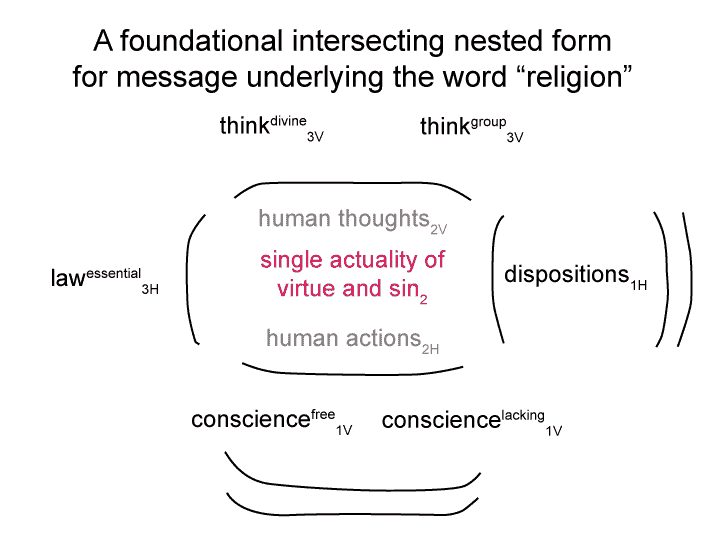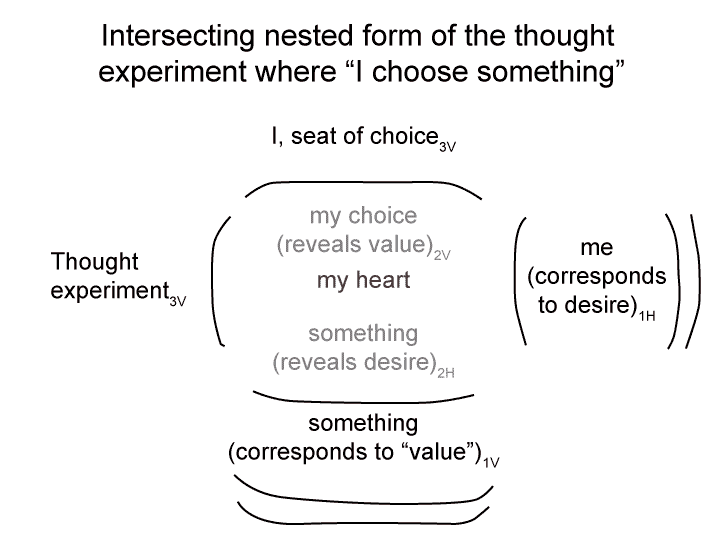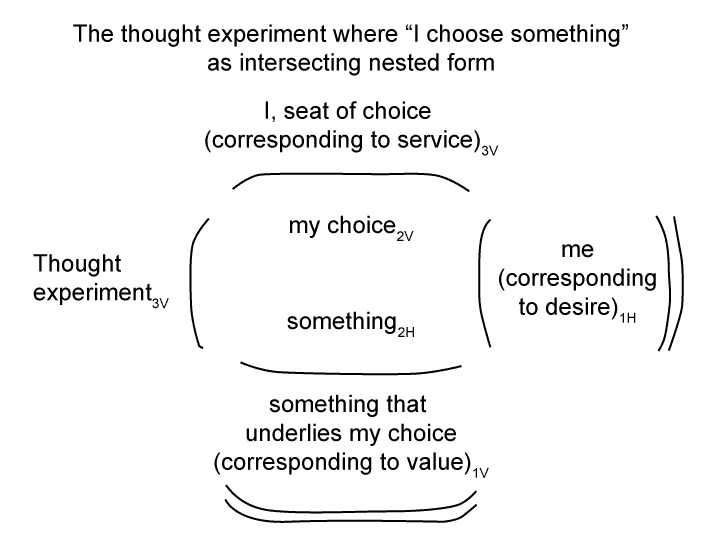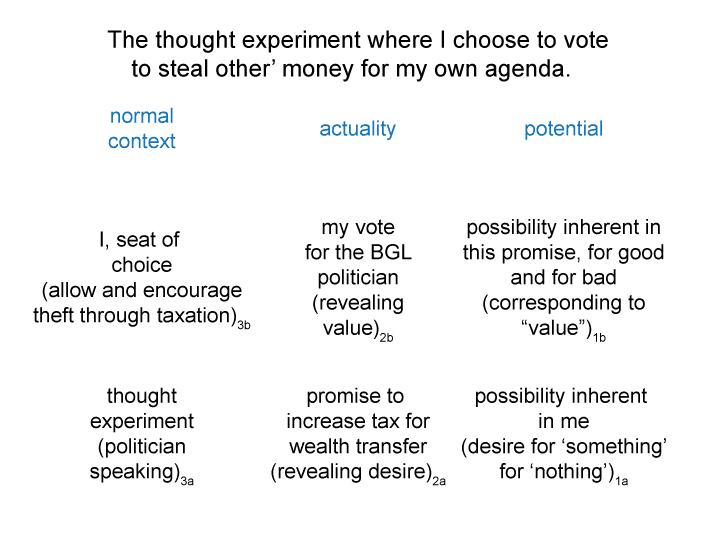Man and Sin by Piet Schoonenberg (1964) 2.3 GL
Summary of text [comment] page 83
[The thought experiment where ‘I choose something’ is visualized as an intersection in a previous blog.
I can draw parallels to the intersection that comprises the message underlying the word ‘religion’.]
Man and Sin by Piet Schoonenberg (1964) 2.3 GJ
Summary of text [comment] page 83
[Now, allow me to consider the intersection.
Is the intersection more convenient for exploring Schoonenberg’s comments on freedom?
I think so.
If these two nested forms intersected, two permutations are possible.
This is the one I select:
The content level becomes the horizontal (not vertical) axis.
The situation becomes the vertical axis.]
Man and Sin by Piet Schoonenberg (1964) 2.3 GI
[Look at the interscoping nested form.
Where does the collective enter into the picture?
It does through the thought experiment3a.]
Man and Sin by Piet Schoonenberg (1964) 2.3 GG
Summary of text [comment] page 83
[Consider the idea of stealing apples.
How about voting for a sovereign who promises take apples from others and giving them to me?
What if I vote to take wealth from others but not myself.
How is that different from theft?
Here is a choice (a vote, expressing a value) that virtually situates something (a promise, expressing a desire to get something for nothing).]
Man and Sin by Piet Schoonenberg (1964) 2.3 GF
[Of course, canning applesauce is not sinful, but you, dear reader, may conjure more lurid examples.]
Man and Sin by Piet Schoonenberg (1964) 2.3 GE
[The second step involves a decision:
I am going to can apple sauce2b. Or I am not.
In order to do so, I must consider the potential of something concerning making a choice1b. This corresponds to value1b.
For example, do I have the ambition to do the task? How important is the task to me1b? How do I value this opportunity1b?]




